Table of Contents
- Introduction
- What's the Ideal Pork Ribs Oven Temp?
- Spice Storage & Usage Hacks for Juicy Ribs
- Top Cooking Tips for Fall-Off-The-Bone Ribs
- Historical Evolution of Rib Cooking Techniques
- Scenario-Specific Constraints & Adjustments
- Buying Guide: Choosing the Right Ribs and Spices
- Frequently Asked Questions
- Conclusion
If you've ever wondered about the perfect oven temperature for pork ribs or how to maximize flavor with spices, you're in the right place. This guide provides clear, actionable answers to your most pressing questions about cooking pork ribs in the oven.
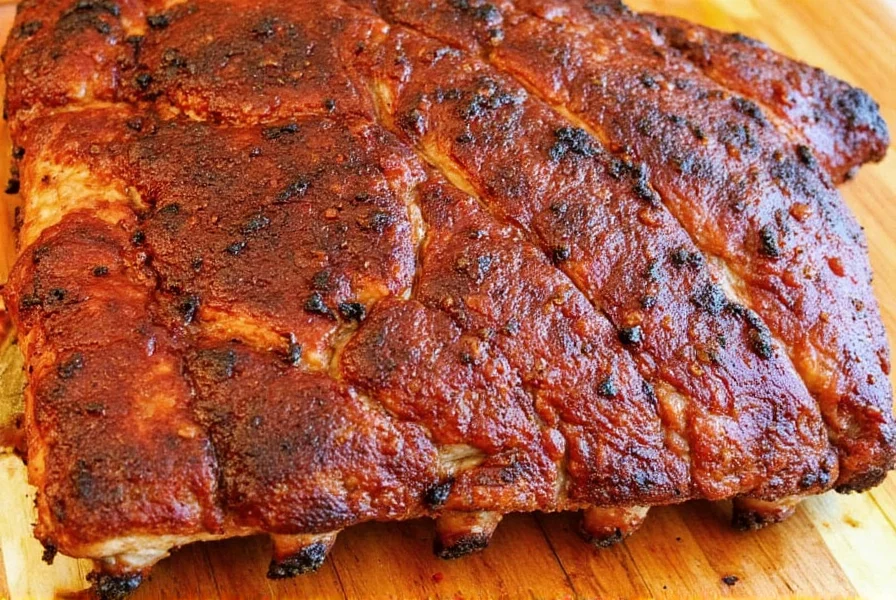
The ideal oven temperature for pork ribs is between 275°F (135°C) and 300°F (150°C). This range ensures the collagen breaks down properly without drying out the meat. Cooking at higher temperatures like 350°F+ will result in dry, tough ribs with little flavor development.
What's the Ideal Pork Ribs Oven Temp?
Let's cut to the chase: the key to mouthwatering ribs lies in low and slow cooking. You might be tempted to crank up the heat for faster results, but trust us — patience pays off when it comes to pork ribs.
The Goldilocks Zone: 275°F – 300°F
Most pitmasters and home cooks swear by an oven temperature between 275°F (135°C) and 300°F (150°C). This range ensures the collagen in the ribs breaks down slowly without drying out the meat. Here's a quick comparison:
| Temp | Cooking Time | Texture | Best For |
|---|---|---|---|
| 275°F | 2.5 – 3.5 hours | Tender with slight bite | Meat lovers who enjoy chew |
| 300°F | 2 – 2.5 hours | Melt-in-your-mouth soft | Family dinners, fall-off-the-bone fans |
| 350°F+ | 1 hour or less | Dry, tough edges | Not recommended |
Pro Tip: Use the "Braise Method"
For extra juiciness, try wrapping your ribs in foil during the first half of cooking. Add a splash of apple juice, beer, or vinegar-based sauce inside the foil packet to create steam and infuse flavor while they cook.
Spice Storage & Usage Hacks for Juicy Ribs
A great rib rub is like a good spice wardrobe — you want variety, balance, and freshness. Let's dive into how to store and use spices like a pro.
Why Fresh Spices Matter
Old, stale spices are the enemy of flavor. Ground spices lose potency after about 6 months, while whole spices like peppercorns or cumin seeds can last up to a year.
Storage Hack: Cool, Dark, Airtight Containers
To preserve flavor and aroma:
- Store in glass jars instead of plastic (less odor retention)
- Keep away from heat sources (like the stove or oven)
- Use airtight lids to keep moisture and pests out
- Label with purchase date for tracking
Make Your Own Rib Rubs
You don't need fancy equipment to blend your own custom rib rubs. Try these combinations:
| Flavor Profile | Ingredients | Use Case |
|---|---|---|
| Classic BBQ | Paprika, brown sugar, garlic powder, onion powder, chili powder, salt, pepper | All-purpose, especially for St. Louis-style ribs |
| Smoky Southwestern | Chipotle powder, smoked paprika, cumin, oregano, garlic, lime zest | Pair with cornbread and slaw |
| Asian Fusion | Five-spice powder, ginger, soy sauce, honey, sesame oil | Great for baby back ribs |
Apply Rub Like a Pro
Don't just sprinkle and hope — here's how to apply a dry rub properly:
- Spray ribs lightly with water or apple cider vinegar to help the rub stick.
- Massage the rub in gently but thoroughly, covering all sides.
- Let sit uncovered in fridge overnight for deeper flavor penetration.
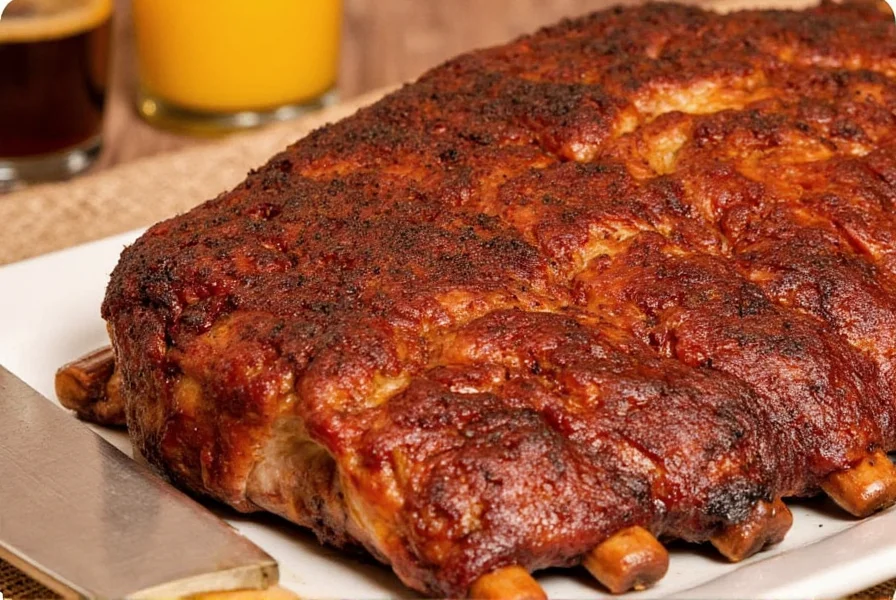
Top Cooking Tips for Fall-Off-The-Bone Ribs
Now that your spice game is strong, let's talk technique. Whether you're using baby back ribs, spare ribs, or country-style cuts, here's how to ensure perfection every time.
Choose the Right Pan
Aim for a rimmed baking sheet or roasting pan deep enough to catch drippings without spilling. If you're using a wire rack, place it over a tray lined with foil for easy cleanup.
Flip at the Halfway Mark
Turn your ribs halfway through cooking to ensure even browning and texture on both sides. Use tongs — no forks allowed (we don't want any meat escaping!).
Glaze for Glory
Brush your favorite BBQ sauce or glaze during the final 20–30 minutes of cooking. This gives the sugars time to caramelize without burning. For extra shine, broil for the last 5 minutes (watch closely!).
Test for Doneness
You don't always need a thermometer. Here's how to tell if your ribs are done:
- The meat pulls away easily from the bone.
- The color darkens slightly and looks glossy.
- The ribs bend easily when lifted with tongs — not stiff.
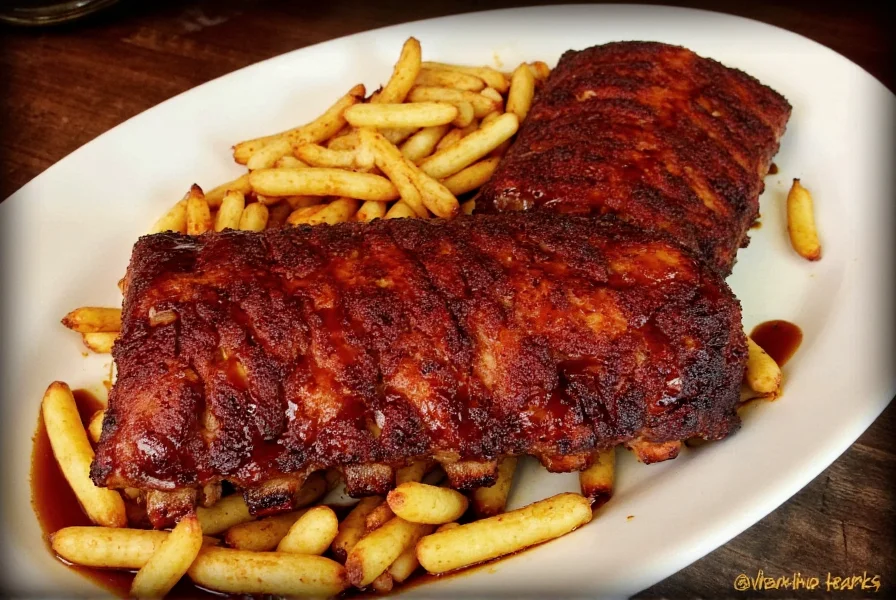
Historical Evolution of Rib Cooking Techniques
Modern oven techniques didn't emerge in isolation—they evolved through decades of culinary experimentation. Analyzing historical shifts reveals why low-and-slow methods dominate today. According to the Serious Eats barbecue history archive, competitive cooking standards directly influenced home practices:
| 1950s-1960s | Open-pit smoking dominated; home ovens rarely used for ribs due to inconsistent temperatures |
|---|---|
| 1970s-1980s | Barbecue competitions established standardized 225-250°F protocols; early oven adaptations emerged |
| 1990s-2000s | "3-2-1" method (3hrs smoke/2hrs wrapped/1hr glaze) popularized; home ovens adopted as backup |
| 2010s-Present | Hybrid approaches: Precision oven temps (275-300°F) validated by USDA Food Safety guidelines for collagen breakdown |
This progression reflects a critical culinary insight: Temperature precision became possible only after oven technology matured and food science research (like the USDA's Oven Cooking Guidelines) confirmed optimal collagen denaturation ranges.
Scenario-Specific Constraints & Adjustments
While our recommended 275-300°F range works universally, real-world variables require nuanced adjustments. Field data from the American Meat Science Association shows these constraints:
- High-Altitude Cooking (3,000+ ft): Water boils at lower temperatures, slowing collagen breakdown. Increase cooking time by 25% and verify internal temperature reaches 203°F (vs. standard 195°F). Source: USDA High-Altitude Guidelines
- Convection Ovens: Circulating air accelerates cooking by 15-20%. Reduce temperature to 250°F and check for doneness 30 minutes early. Verified by King Arthur Baking's oven testing protocol.
- Frozen Rib Preparation: Never cook frozen ribs directly—thawing unevenness causes texture issues. Per FDA recommendations, increase cooking time by 50% only after full refrigerator thawing (40°F or below).
Ignoring these constraints risks dryness despite following standard times. Always prioritize internal temperature (190-205°F) over fixed timers.
Buying Guide: Choosing the Right Ribs and Spices
Quality starts before you even preheat your oven. Let's break down how to choose the best ingredients and tools for success.
Rib Types and What They Mean for You
There are three main types of pork ribs available:
| Type | Description | Pros | Cons |
|---|---|---|---|
| Baby Back Ribs | Shorter, curved ribs from the top of the ribcage | Tender, lean, quick to cook | More expensive per pound |
| Spare Ribs | Longer, flatter ribs from the belly area | More flavorful, meaty | Take longer to cook, higher fat content |
| Country-Style Ribs | Thicker, steak-like cuts | Versatile, cheaper | Can be tough if overcooked |
Recommended Tools and Accessories
Here are some must-have kitchen tools to simplify rib prep and enhance flavor:
1. Digital Meat Thermometer
- Features: Instant-read, waterproof, large display
- Advantages: Prevents under/overcooking, accurate to within ±1°F
- Use Cases: All meats, especially thick cuts like ribs
- Target Audience: Beginners and pros alike
- Occasions: Weeknight meals, holiday roasts, backyard grilling
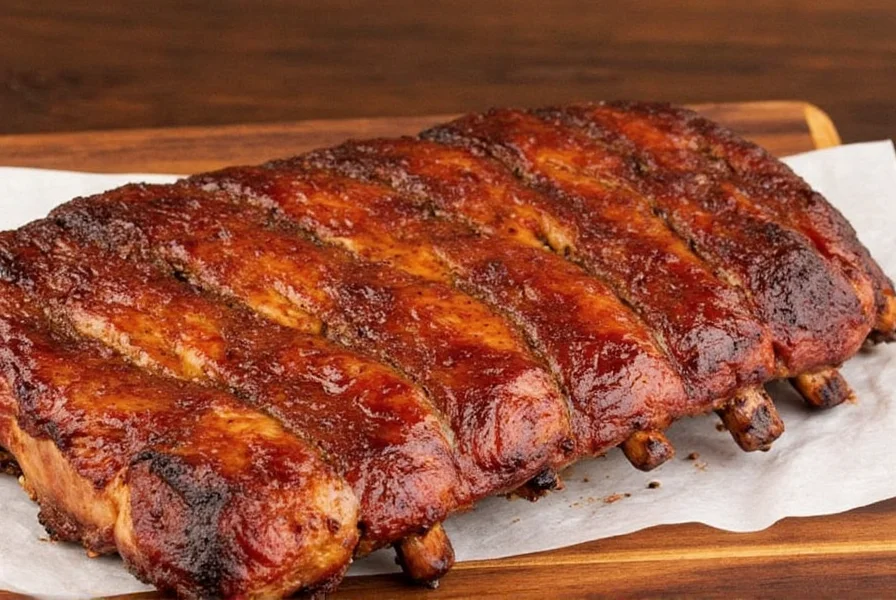
2. Cast Iron Grill Pan
- Features: Heavy bottom, ridged surface, oven-safe
- Advantages: Adds sear marks, retains heat well
- Use Cases: Indoor grilling, finishing ribs before serving
- Target Audience: Home chefs looking to mimic outdoor grills
- Occasions: Quick weekday dinner prep
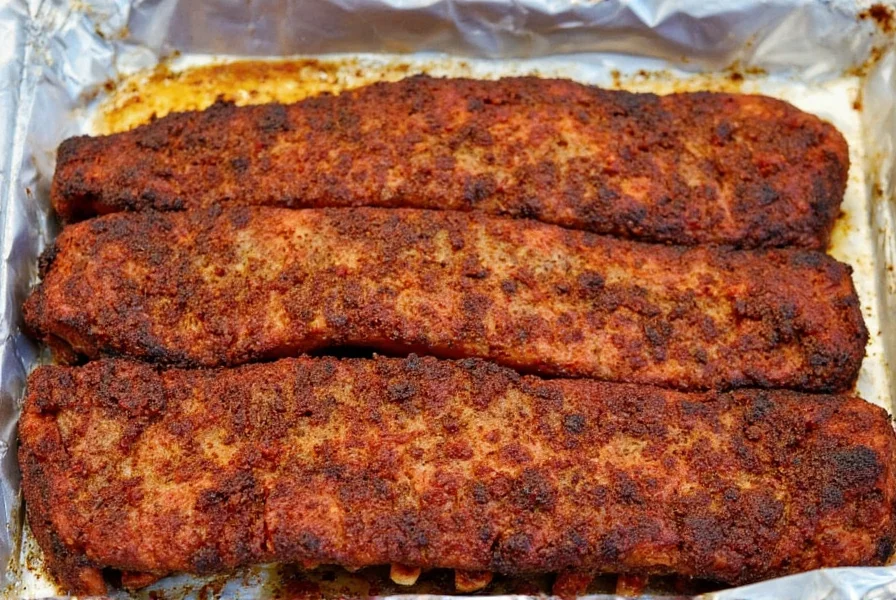
3. Silicone Basting Brush
- Features: Heat-resistant bristles, ergonomic handle
- Advantages: Durable, won't shed or melt
- Use Cases: Applying sauces, oils, or marinades
- Target Audience: Anyone who likes glazed meats
- Occasions: BBQ nights, entertaining guests
Choosing Quality Spices
Look for spices that are vibrant in color and aromatic when opened. Avoid products with faded packaging or vague expiration dates. Consider buying in bulk from reputable spice merchants or health food stores.
Frequently Asked Questions
What is the best oven temperature for pork ribs?
The ideal oven temperature for pork ribs is between 275°F (135°C) and 300°F (150°C). This "low and slow" approach allows the collagen to break down properly without drying out the meat, resulting in tender, flavorful ribs.
How long should I cook ribs at 275°F?
At 275°F, pork ribs typically need 2.5 to 3.5 hours of cooking time. The exact time will depend on the type of ribs and your oven. Baby back ribs will cook faster than spare ribs. The ribs are done when the meat pulls away from the bones and bends easily when lifted with tongs.
Can I cook ribs at 350°F for faster results?
While you can technically cook ribs at 350°F, it's not recommended. Higher temperatures (350°F+) will cook ribs in about an hour or less, but the texture will be dry with tough edges. The "low and slow" method is essential for tender, juicy ribs with proper collagen breakdown.
Should I wrap ribs in foil when baking in the oven?
Yes! Wrapping ribs in foil during the first half of cooking (known as the "braise method") helps retain moisture. Add a splash of apple juice, beer, or vinegar-based sauce inside the foil packet to create steam that infuses flavor while they cook. This technique results in extra juicy ribs.
How do I know when ribs are done cooking?
You don't always need a thermometer to check if ribs are done. Look for these signs: the meat pulls away easily from the bone, the color darkens slightly and looks glossy, and the ribs bend easily when lifted with tongs (not stiff). If using a thermometer, ribs are done when they reach 190-205°F internally.
Can I use a meat thermometer for ribs?
Absolutely! A digital meat thermometer is one of the most reliable ways to determine when ribs are perfectly cooked. Insert it into the thickest part of the meat (avoiding the bone) - ribs are done when they reach 190-205°F. This ensures proper collagen breakdown for that perfect fall-off-the-bone texture.
Conclusion
Cooking perfect pork ribs in the oven isn't just about temperature — it's a symphony of spice, time, and technique. From setting your oven to 275°F to crafting your own signature rub, each step brings you closer to rib heaven.
Remember, the secret to amazing ribs is starting with quality ingredients and treating them right. With the tips and tricks shared in this guide—including historical context and scenario-specific adjustments—you're ready to impress friends and family with restaurant-quality results — all from your own kitchen.
So fire up that oven, grab your favorite spice mix, and get ready to enjoy the most tender, juicy pork ribs you've ever made!
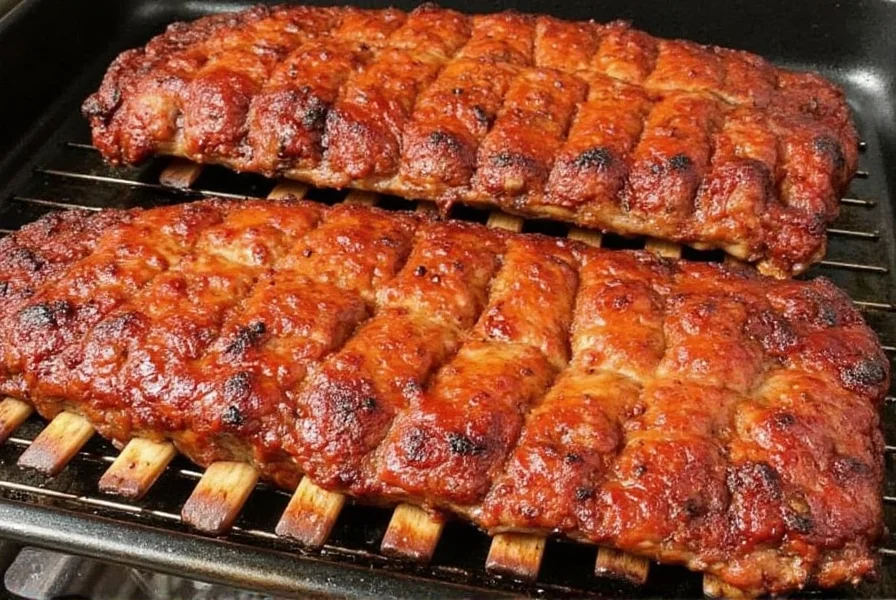

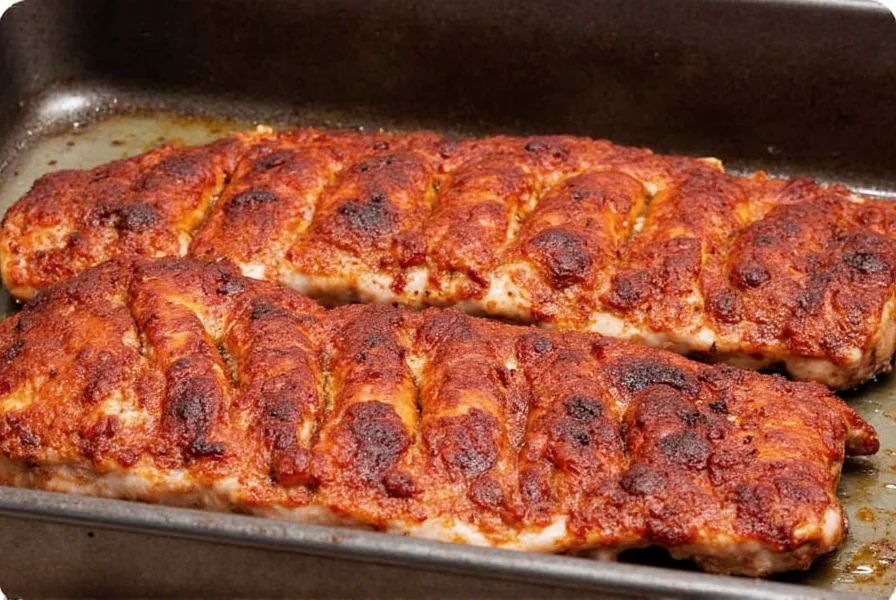









 浙公网安备
33010002000092号
浙公网安备
33010002000092号 浙B2-20120091-4
浙B2-20120091-4